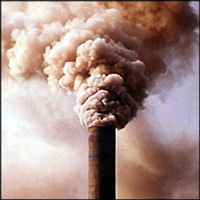New system tracks CO2 emissions of 50,000 power plants worldwide
How green is your power?
New system tracks CO2 emissions of 50,000 power plants worldwide
mongabay.com
November 14, 2007
A new online database allows users to track carbon dioxide (CO2) emissions of 50,000 power plants worldwide.
The system, called CARMA—Carbon Monitoring for Action, was developed by the Center for Global Development (CGD), an policy and research group.
The research team, led by David Wheeler, hopes the database will help “speed the shift to less carbon-intensive power generation — with the objective of minimizing global warming.” CGD says that climate change will hurt poor people in developing countries “first and worst”.
“CARMA makes information about power-related CO2 emissions transparent to people throughout the world,” said Dr. Wheeler. “Information leads to action. We know that this works for other forms of pollution and we believe it can work for greenhouse gas emissions, too.”

Image courtesy of NASA |
According to CGD, earlier research by Wheeler and colleagues “showed that highly-polluting plants in China and Indonesia responded to pressure from neighboring communities and lenders by reducing pollution significantly after public disclosure of their emissions.”
“We expect that institutional and private investors, insurers, lenders, environmental and consumer groups and individual activists will use the CARMA data to encourage power companies to burn less coal and oil and to shift to renewable power sources, such as wind and solar,” Wheeler added.
The database ranks individual power plants, plotting their location by latitude and longitude, and allows users to view power-related emissions data by cities, states or provinces, and countries. For the U.S., emissions data are also available for Congressional districts, counties and metro areas.
CARMA shows that U.S.’s biggest CO2 emitter is Southern Co. with annual emissions of 172 million tons, followed by American Electric Power Company Inc., Duke Energy Corp., and AES Corp. The U.S. accounts for accounts for about 25 percent of the 10 billion tons of CO2 emitted per year through power generation globally. Power generation represents about one-quarter of total emissions of CO2 worldwide.
CARMA also highlights low-carbon power producers — which are given a green rating in its five-color rating system. The dirtiest polluters are assigned a red rating.
The largest U.S. power plant to win a green rating for nearly zero CO2 emissions is the Palo Verde nuclear plant near Phoenix, Arizona, producing about 26 million megawatt-hours (MWh) of electricity per year. The next top five plants are also nuclear.
The state with the greatest CO2 emissions from electricity generation is Texas (290 million tons), followed by Florida (157 million tons), Indiana (137 million tons), Pennsylvania (136 million tons) and Ohio (133 million tons). California, the country’s most populous state ranks 13th in emissions (79 million tons), while Vermont is the state with the lowest emissions (113,248 tons).
Walker County in Alabama is the dirtiest county with its power plants producing over 28 million tons of CO2 each year.
On a global level, China trails the U.S. with 2,7 billion tons annually from the power sector. Russia (661 million tons(, India (583 million tons), Japan (400 million tons), Germany (356 million tons), Australia (226 million tons), South Africa (222 million tons), the United Kingdom (212 million tons), and South Korea (185 million tons) follow. Australia has the highest per capita emissions from power generation at 11 tons of per person every year. The United States follows at 9 tons. The average Chinese citizen produces 2 tons, while Indians emit about half of one ton per person.
Huaneng Power International (292 million tons) has the highest emissions from power generation of any company in the world.
“The CARMA data are a vivid illustration of the fact that rich countries and developing countries must work together to overcome the challenge of climate change,” said Dr. Wheeler. “Our research shows that although the rich world is still responsible for 60 percent of the carbon dioxide in the atmosphere, developing countries are catching up very quickly — and they will suffer the worst of the effects.”














